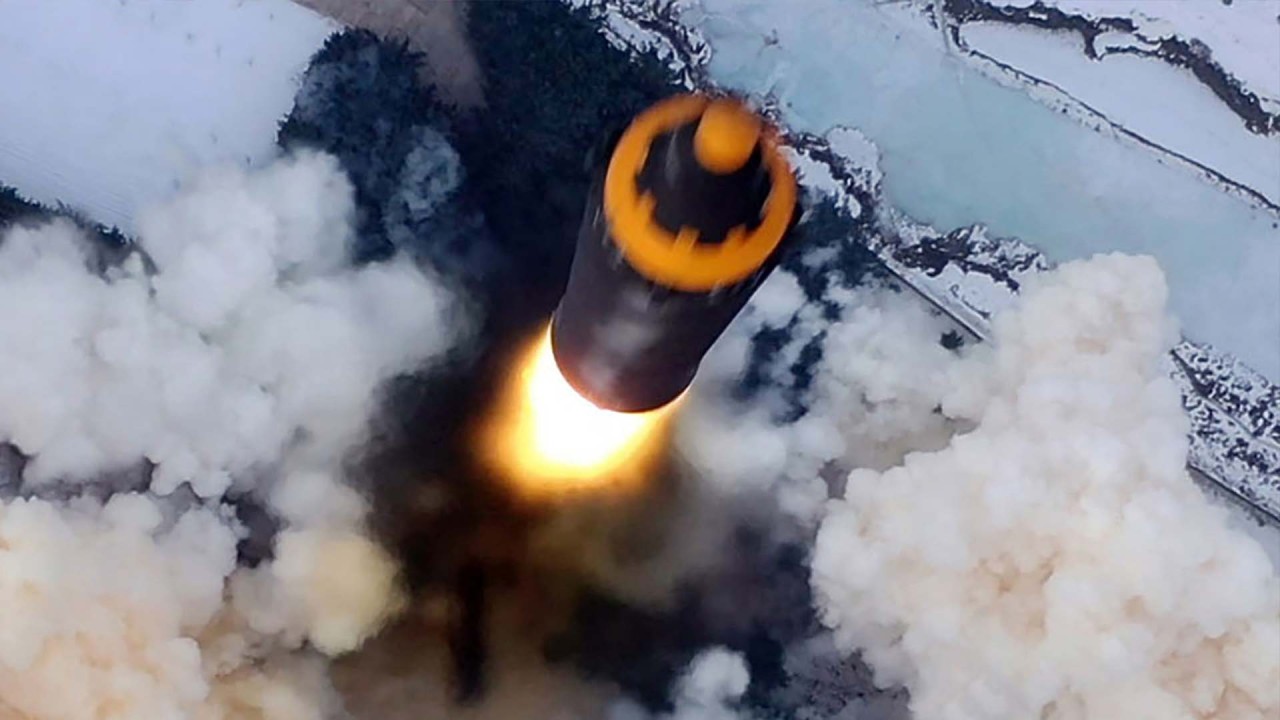
North Korea base near China border ‘likely’ for ICBMs deployment, US think tank says
- The base at Hoejung-ni in Chagang province, about 25km from the border with China, ‘will likely house a regiment-sized unit’ equipped with ICBMS, CSIS said
- Analysts said stationing missiles so close to China would make any pre-emptive strike against them difficult because of the risk of hitting Chinese territory
The Centre for Strategic and International Studies based its report on January 21 satellite images of the base at Hoejung-ni, in North Korea’s Chagang province about 25km (16 miles) from the border with China and 280km (175 miles) northeast of Pyongyang.
“The Hoejung-ni missile operating base will, according to informed sources, likely house a regiment-sized unit equipped with intercontinental ballistic missiles,” the report said.
“Should operational ICBMs not become available in the near term, it is likely that intermediate range ballistic missiles (IRBMs) will be deployed,” the report added, noting that North Korea tested a Hwasong-12 IRBM from Chagang province last month.
It said Hoejung-ni was one of around 20 ballistic missile bases that have never been declared by North Korea and that although its construction began 20 years ago, it was one of the latest to be completed.
With few options to rein in North Korea, missile launches won’t stop: experts
Analysts say stationing ICBMs so close to China would make any pre-emptive strike against them difficult because of the risk of hitting Chinese territory.
The CSIS report comes after a slew of recent North Korean missile tests that have raised fears that the country may resume ICBM tests. North Korea has suggested it could restart such tests suspended since 2017 because the United States has shown no sign of dropping “hostile policies”.
Asked about the CSIS report, a spokesman for the US defence department, Lieutenant Colonel Marty Meiners, declined to comment on “matters of intelligence or commercial imagery analysis.”
“However, we have been very clear on the threat posed by (North Korea’s) missile programmes, and our commitment to the defence of (South Korea), Japan, and the US homeland, and our commitment to uphold regional peace and stability,” he said.
CSIS said there were no signs of an ICBM unit at the base as of January and no protective anti-aircraft positions could been seen within 10km (6 miles), while the nearest “readily identifiable” surface-to-air missile base was 50km (30 miles) away.
However, it said its images showed Hoejung-ni to be active and well maintained by North Korean standards and that minor development of its infrastructure was continuing.
I went to North Korea expecting paradise, and was trapped for 43 years
The images showed two hardened drive-through missile checkout facilities used for missile arming, fuelling, systems checkout and maintenance operations, CSIS said.
Each facility consisted of a large concrete-reinforced shelter cut into the side of the adjacent mountain measuring about 35 metres in length, sufficiently large to accommodate all known North Korean mobile missile launchers.


